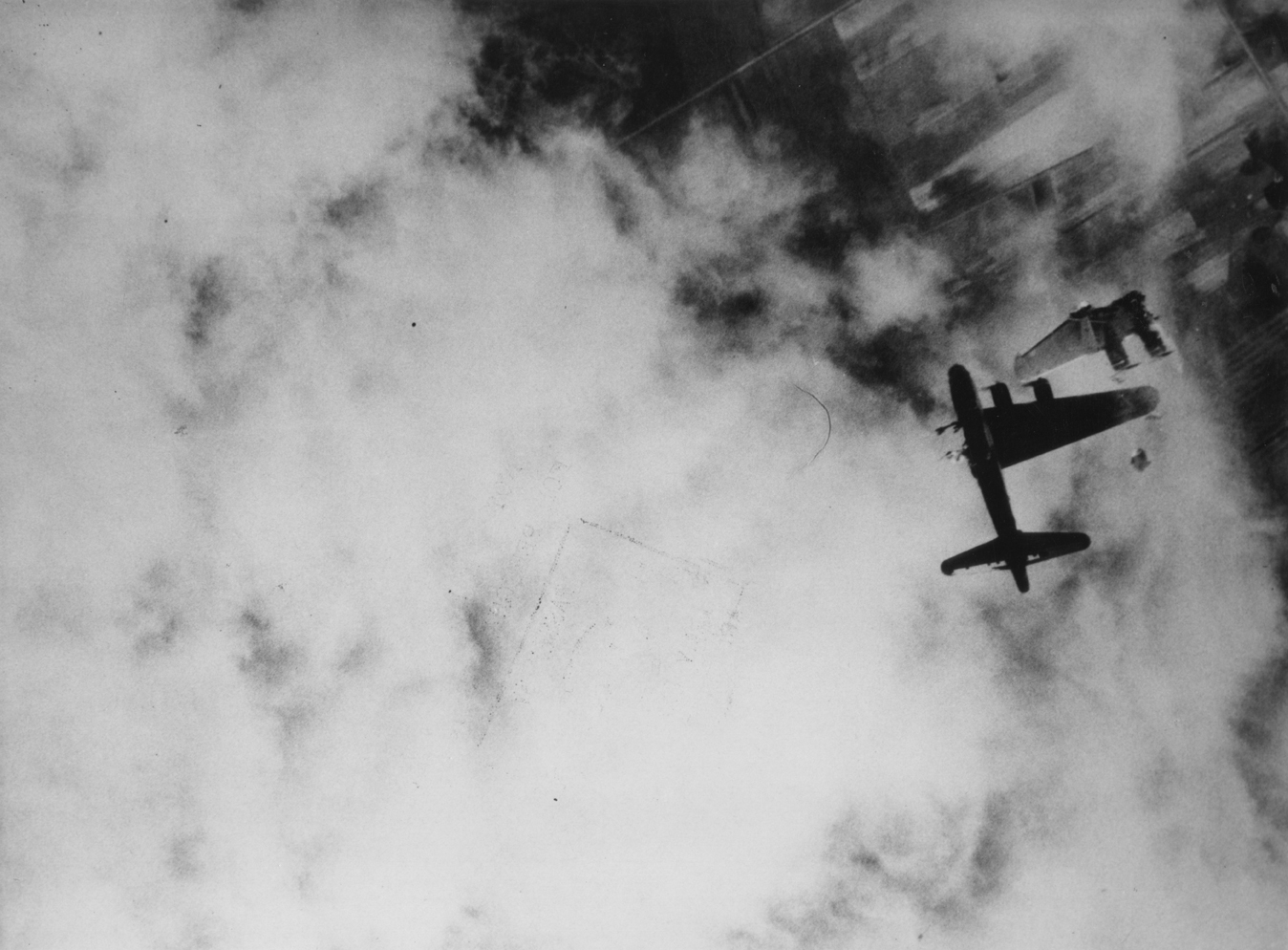
8 April 1945: Wee Willie, a Flying Fortress heavy bomber, left its base at Air Force Station 121 (RAF Bassingbourne, Cambridgeshire, England), on its 129th combat mission over western Europe. The aircraft commander was 1st Lieutenant Robert E. Fuller, U.S. Army Air Forces.
Wee Willie was a B-17G-15-BO, serial number 42-31333, built by the Boeing Airplane Company’s Plant 2, Seattle, Washington. It was delivered to the United States Army Air Forces at Cheyenne, Wyoming on 22 October 1943, and arrived at Bassingbourne 20 December 1943. It was assigned to the 322nd Bombardment Squadron (Heavy), 91st Bombardment Group (Heavy), 1st Air Division, 8th Air Force. The identification letters LG W were painted on both sides of its fuselage, and a white triangle with a black letter A on the top of its right wing and both sides of its vertical fin.
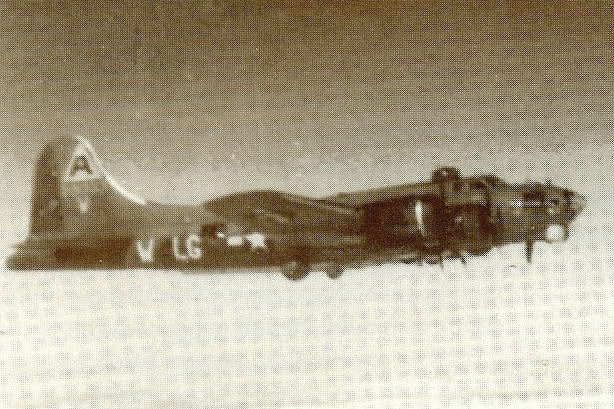
On 8 April 1945, the 322nd Bombardment Squadron was part of an attack against the locomotive repair facilities at the railroad marshaling yards in Stendal, Saxony-Anhalt Germany. The squadron was bombing through clouds using H2S ground search radar to identify the target area. Antiaircraft gunfire (flak) was moderate, causing major damage to four B-17s and minor damage to thirteen others. Two bombers from the 91st Bomb Group were lost, including Wee Willie.
The Missing Air Crew Report, MACR 13881, included a statement from a witness:
We were flying over the target at 20,500 feet [6,248 meters] altitude when I observed aircraft B-17G, 42-31333 to receive a direct flak hit approximately between the bomb bay and #2 engine. The aircraft immediately started into a vertical dive. The fuselage was on fire and when it had dropped approximately 5,000 feet [1,524 meters] the left wing fell off. It continued down and when the fuselage was about 3,000 feet [914.4 meters] from the ground it exploded and then exploded again when it hit the ground. I saw no crew member leave the aircraft or parachutes open.
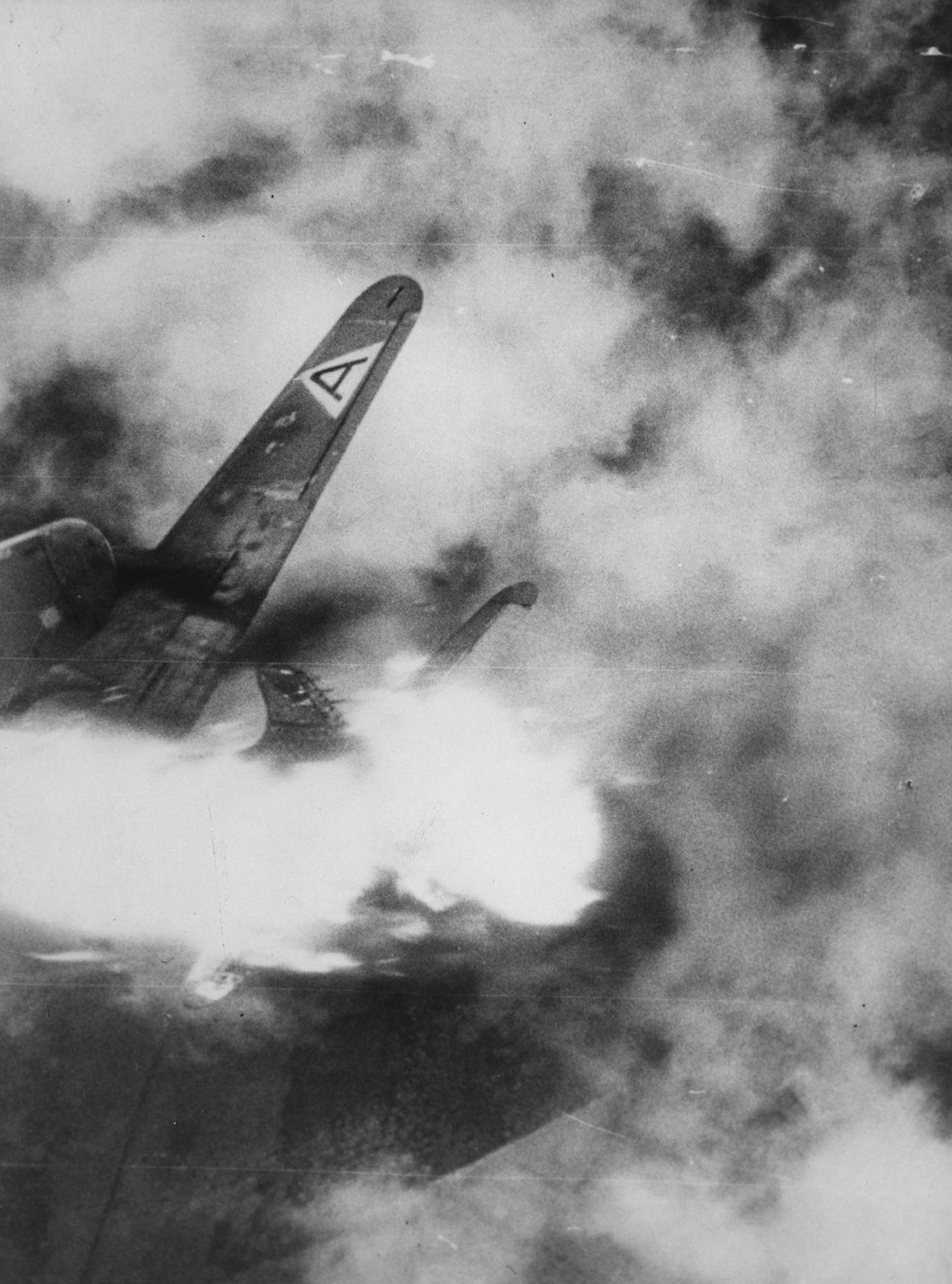
The pilot, Lieutenant Fuller, did escape from the doomed bomber. He was captured and spent the remainder of the war as a Prisoner of War. The other eight crew members, however were killed.
1st Lieutenant Robert E. Fuller, O-774609, California. Aircraft Commander/Pilot—Prisoner of War
2nd Lieutenant Woodrow A. Lien, O-778858, Montana. Co-pilot—Killed in Action
Technical Sergeant Francis J. McCarthy, 14148856, Tennessee. Navigator—Killed in Action
Staff Sergeant Richard D. Proudfit, 14166848, Mississippi. Togglier—Killed in Action
Staff Sergeant Wylie McNatt, Jr., 38365470, Texas. Flight Engineer/Top Turret Gunner—Killed in Action
Staff Sergeant William H. Cassiday, 32346219, New York. Ball Turret Gunner—Killed in Action
Staff Sergeant Ralph J. Leffelman, 19112019, Washington. Radio Operator/Top Gunner—Killed in Action
Staff Sergeant James D. Houtchens, 37483248, Nebraska. Waist Gunner—Killed in Action
Sergeant Le Moyne Miller, 33920597, Pennsylvania. Tail Gunner—Killed in Action
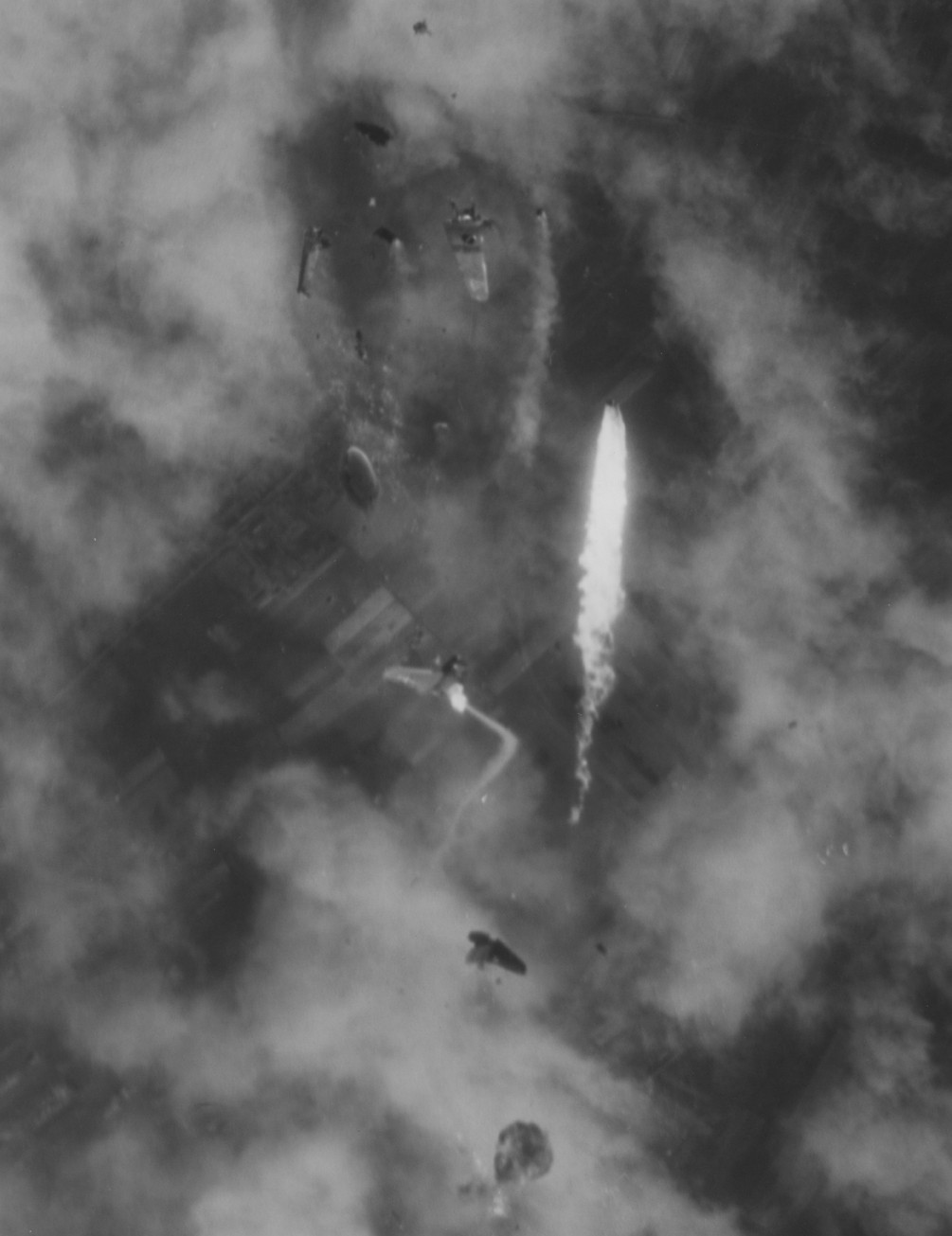
Wee Willie was the oldest B-17G still in service with the 91st Bomb Group, and the next to last B-17 lost to enemy action by the group before cessation of hostilities. The War in Europe came to an end with the unconditional surrender of Germany just 30 days later, 7 May 1945.
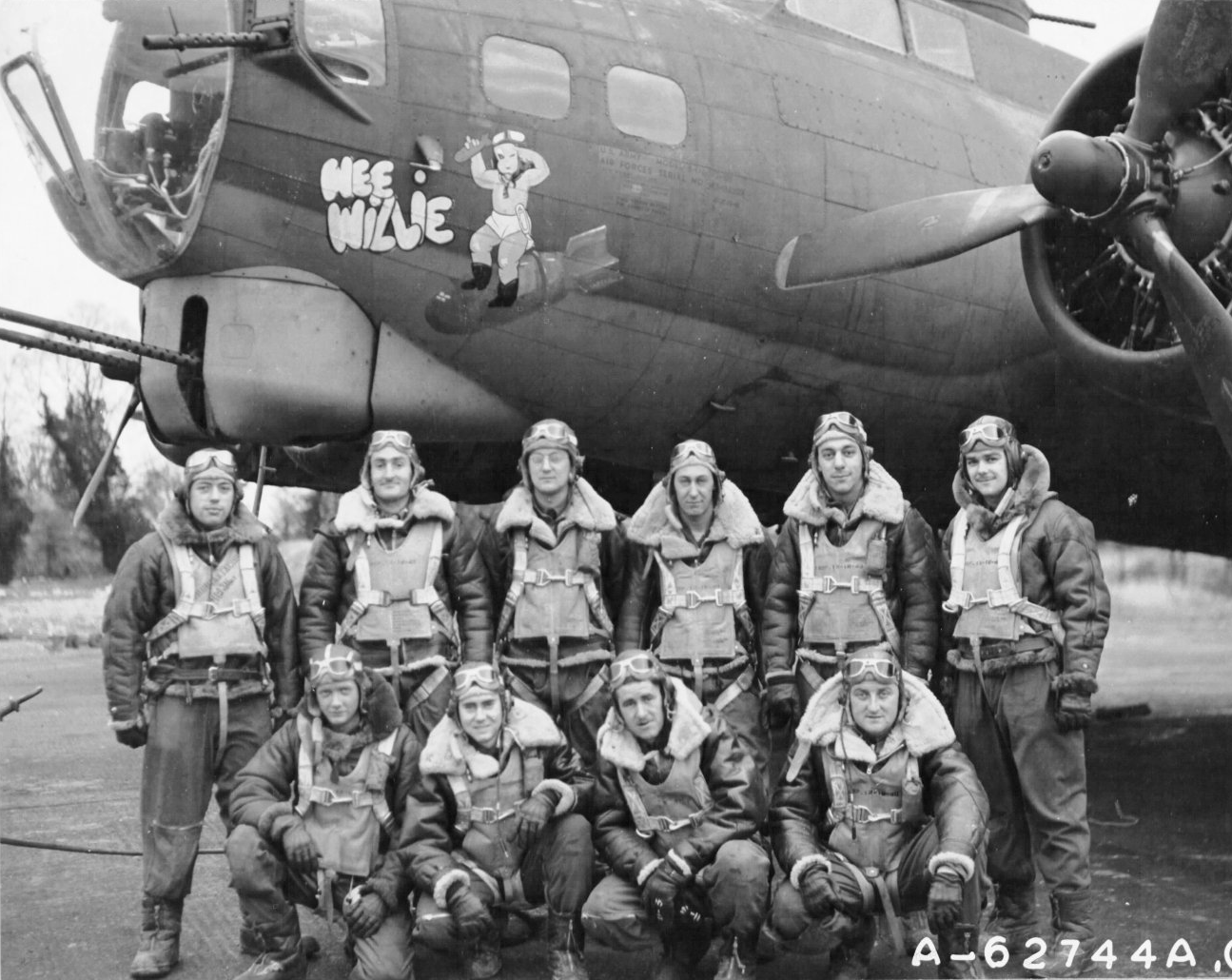
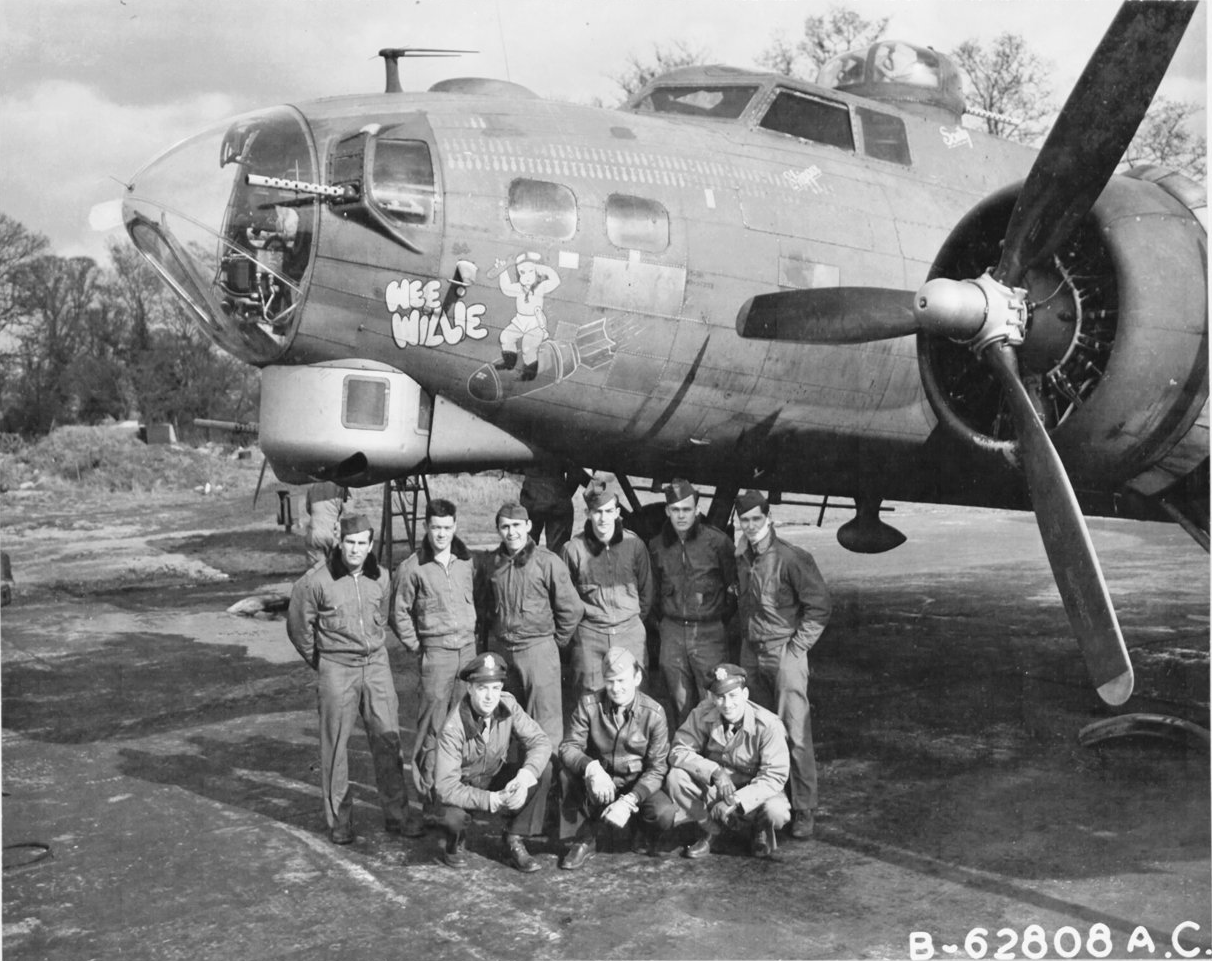
© 2019, Bryan R. Swopes
Such dangerous ,heroic and patriotic demand of the time I salute to them.
Always my heroes of WW2! See Twelve O’Clock High.
This is so close to the end of the war! RIP flyers. Respect from the UK.
Looks like it was a field converted B-17F. The 42-**** number indicates it was manufactured in 1942. Not sure on the theatre date, may not be entirely correct.
Thanks, Ron. “Wee Willie” was not a field-modified B-17F. And no, the 42 does not represent the year the airplane was manufactured. It is the fiscal year when funding for the contract for that block of airplanes was approved. B-17G production began in July 1943. 42-31333 was the first Block 15 Boeing B-17G Flying Fortress: B-17G-15-BO, Boeing serial number 6446. It was built at Boeing Plant 2 in Seattle, Washington, in October 1943. 42-31333 was delivered to a modification center at Cheyenne, Wyoming, 22 October 1943, and then on to Grand Island AAF, Nebraska, 3 November 1943, and Memphis, Tennessee, 9 November 1943. It arrived at Bassingbourne, England 20 December 1943. The airplane was assigned to the 322nd Bombardment Squadron, 91st Bombardment Group, and given fuselage identification code LG W. “Wee Willie” was damaged in combat 3 February 1944 and one of its gunners wounded. The bomber was out of service until 20 February 1944.
Thanks Bryan. Always enjoy checking up on your notes about the “Wee Willie”. My dad is turning 95 in a couple of months. Lost mom late 2017. Dad sometimes gives us all a little bit of history. When he feels up to giving the young ones some info about what it was like. It sure would be great to get some writing from you to him. Anyone is welcomed to write him. Do you know if there are any crew from “Wee Willie” flight teams still around? My Dad is Lt. Col. Jess V. Ziccarello Ret. USAF. Thanks for all the work you have done over the years.
Thank you, Rick. I constantly update articles as I find new information. Just recently, I changed all of the photographs of Wee Willie with larger format, higher definition images. That’s an interesting question about surviving members of Wee Willie combat crews. In 129 missions, I would guess that no less than 50 men, and very likely many more than that, would have flown on that B-17. I do know that the 91st Bombardment Group has a reunion scheduled 16–19 May 2018 in Dayton, Ohio, coinciding with the opening of the Memphis Belle exhibit at the National Museum of the United States Air Force. A membership contact for the Group is Jody Kelly, Oxnard, CA. (805) 984-7706; e-mail: [email protected]
The text speaks of one surviving crew member and eight who perished. On the B-17, the crew was ten. Where is the tenth?
Wee Willie did not carry a bombardier. In the late war, bomber formations would drop their bombs when the lead plane dropped its load. One of the enlisted gunners acted as the “togglier” who released the bombs.
Thank you for the explanation
RIP Wee Willie crew & all who served & flew these missions to help stop Hitler. I knew quite a few Dad’s who survived the war when I was a kid. RESPECT!
One of the most dramatic photo sequences of WWII to show the sheer and sudden terror of bombing mission due to deadly flak right near the very end of the war. Even in late 1944, the 8th Fighter Command had almost complete control of the air for the heavy bomber force over Axis Germany. By the spring of 1945, the Luftwaffe could only put up token opposition, due to almost a total lack of fuel, pilots and even usable airstrips. But the flak was deadly and accurate, even up until the very end of the war. And there was little way to defend against it.